Cambridge Exams 101: General English

Cambridge Exams 101: General English
Almost everyone has heard about Cambridge exams, but not everyone knows why take them. Moreover, if you are a teacher and you want or need to recommend your students a Cambridge exam, you need to know what options to offer. This article will cover these questions.
1. Why take an exam?
For some people the answer to the question is obvious: a school or workplace requirement. But this is not the only reason why a person might want to take an exam. For an adult, having a certified level of English can be a good addition to their resume. For a child or a teen, it can be a good practice of dealing with a stressful situation, which any exam definitely is.
For a student of any age, exams are a good way of assessing their progress, and, therefore, can put their learning process into perspective.
2. Cambridge exams
YLE
Cambridge offers a line of exams for kids with the main emphasis put on the idea of exams not being intimidating. All the tasks are colourful and engaging. It is a good way of introducing a child to the world of exams and get them prepared for future exams at school. Moreover, even if a child does quite badly at the exam, they will still get a certificate. The exams are comprised of 3 parts (Listening, Reading & Writing and Speaking), and for each part an examinee can get up to five ‘shields’. You can read more about the exams on Cambridge website:
- YLE Starters (pre-A1)
- YLE Movers (A1)
- YLE Flyers (A2)
Key A2
As the name states, this exam is designed to test for A2 level (Elementary). Nevertheless, starting from this exam, an examinee can achieve one of three levels: If they do well (grades C or B), they get A2, if they do a little badly - A1, but if they get grade A, they achieve level B1.
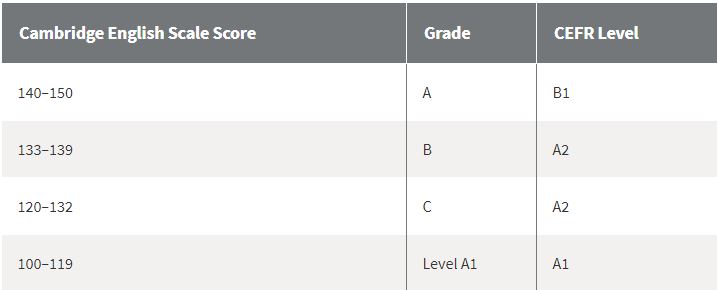
There are two variations of the exam: Key and KEY for Schools which, as the name suggests oriented towards school children. There is a slight discrepancy in the topics of these two exams, but besides this, in terms of structure, they are absolutely the same. There has been a revision of the exam in 2020. Now there are four parts to the exam: Reading, Writing (these two used to be one part), Listening and Speaking. Writing part is now longer: a letter in task 1 should now be at least 100 words long (it used to be 35-45).
Preliminary B1
As well as B1 level (grades B and C) - Lower Intermediate level, an examinee can get B2 (grade A) or A2.
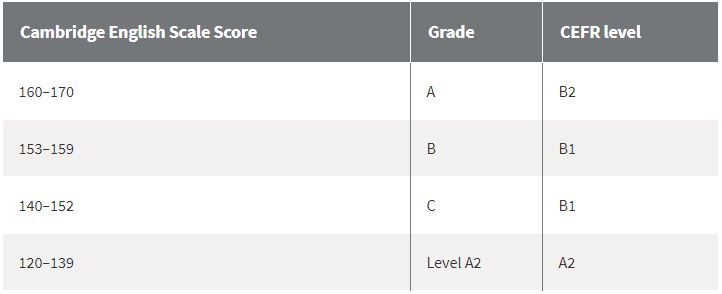
There are 4 parts to the exam: Reading, Writing, Listening, and Speaking. Similar to Key A2, there is also Preliminary for Schools. Preliminary exam has also undergone revision in 2020. Among other things, Cambridge redesigned Listening Part 2, changed Reading Part 4, and widened the choice of styles in Writing Part 2.
First B2
For First an examiner can get B2 level (grades C, B) - Upper Intermediate, C1 (grade A) or B1.
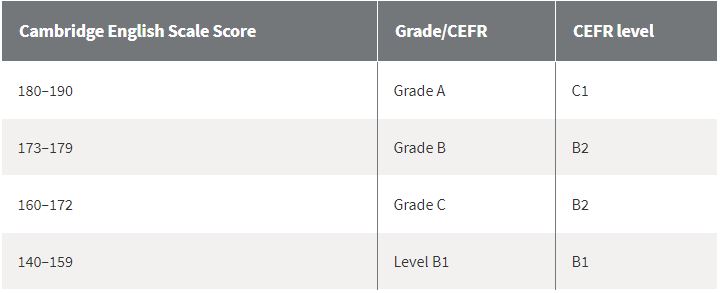
There is also First for Schools. However, the difference in topics with this exam is quite blurred: First for Schools is targeted at teenagers between 15 and 17; topics of First are mostly relevant to people aged 18 to 22. The last revision of B2 First exam happened in 2015. The exam consists of 4 parts: Reading and Use of English, Writing, Listening, and Speaking. Speaking part can be provided during a week before or after the other three parts (which are always taken together in the aforementioned order), or even on the same day.
Advanced C1
For Advanced exam an examinee can get C1 level (grades C and B), C2 (grade A) or B2.
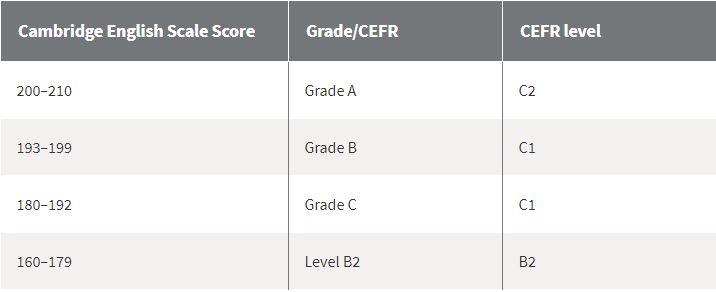
There is only one variant of the exam (no ‘for Schools’ option), and the topics require critical thinking. That is why I would not recommend taking this exam at school, as achieving a high score for writing and speaking can be rather challenging. Nevertheless, I have had a successful experience of preparing teenagers (17-18 year old) for Advanced C1.
The exam consists of four parts: Reading and Use of English, Writing, Listening, and Speaking. Speaking part can be provided during a week before or after the other three parts (which are always taken together in the aforementioned order), or even on the same day.
The last update of the exam was in 2015.
Proficiency C2
With C2 being the highest level of language knowledge, an examinee can get either C2 level (grades C, B, and A) or C1.
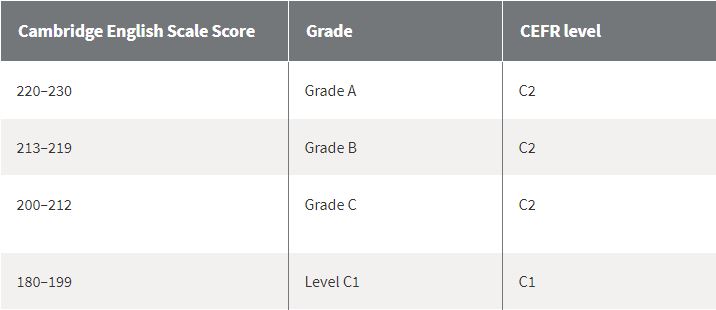
The exam requires extremely broad knowledge of academic English, collocations, writing styles, and skilful usage of grammatical constructions. The exam consists of four parts: Reading and Use of English, Writing, Listening, and Speaking. Speaking part can be provided during a week before or after the other three parts (which are always taken together in the aforementioned order), or even on the same day. The exam was last updated in 2013, so the new revision will probably happen soon.